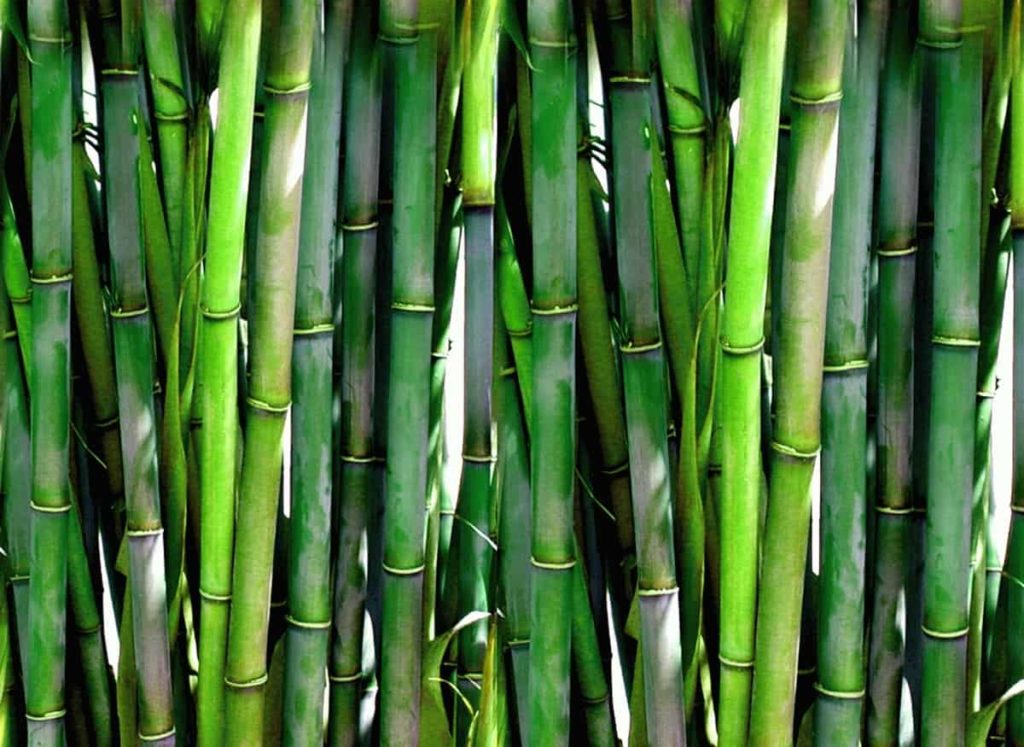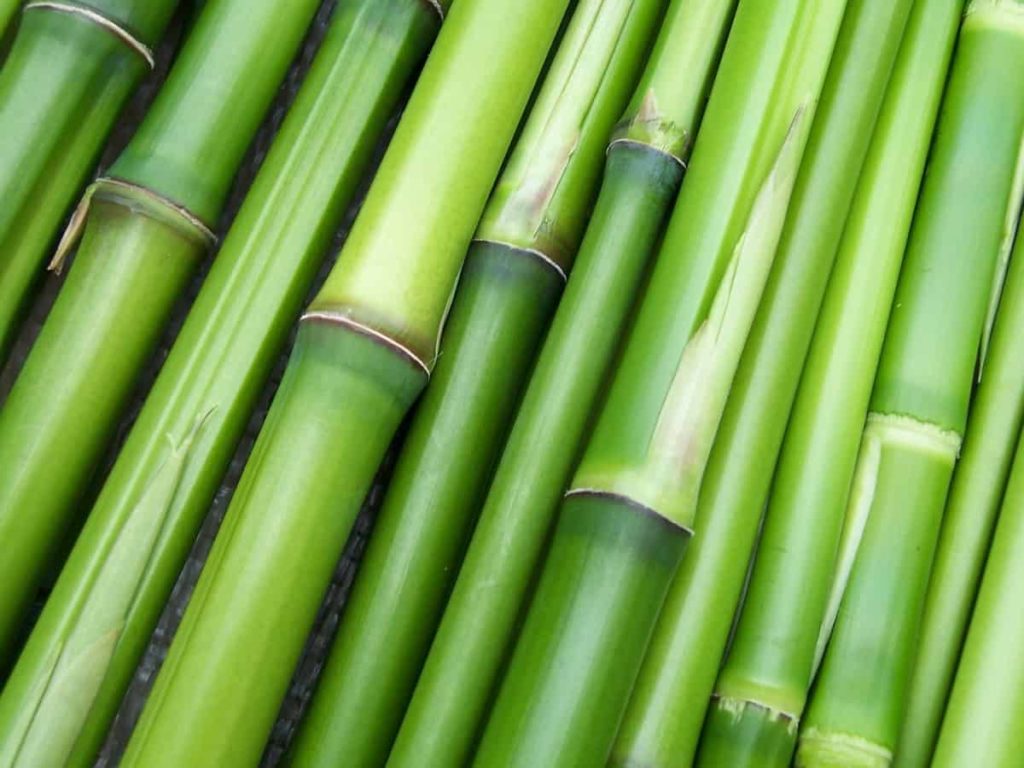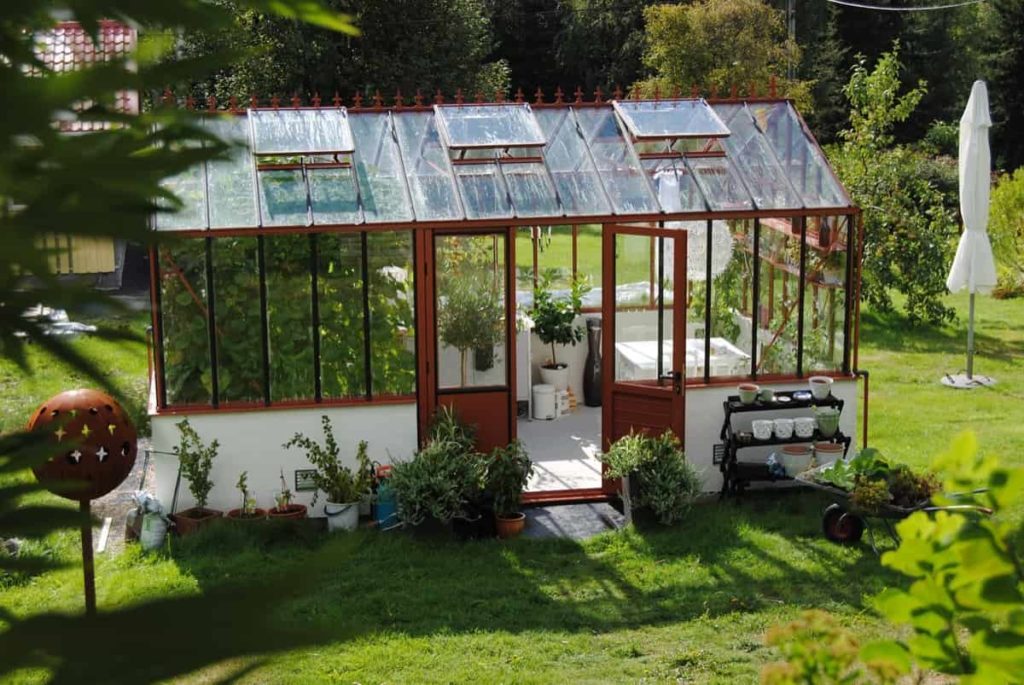At this moment, the world’s population is growing at an alarming rate, and with that growth comes an increase in food demand. There are also various challenges in agriculture, such as agricultural land deterioration, the exploitation of fertile land for real estate and industrial setup, and adverse environmental circumstances, such as the lack of sufficient frequency of light, temperature, humidity, CO2, and airflow.

These factors are compelling us to adopt protected cultivation practices, yet the expense of constructing a polyhouse is prohibitively expensive. So, here we are with our topic for today, “BAMBOO POLYHOUSE.” The benefits, how to set up, design, crops to grow, how to make it profitable, technicalities, maintenance, inputs, subsidies, cost, and economics, of a Bamboo polyhouse will be discussed in this article. Let’s check out more information about bamboo polyhouse construction below.
Many of us dream of having a polyhouse where we can grow off-season crops, cultivate nurseries of vegetable or horticultural crops. However, the expense of constructing a modern polyhouse is incredibly expensive, so this remains a pipe dream for most of us. However, have you heard of a bamboo polyhouse? Yes, there is a sort of polyhouse with bamboo-based infrastructure. Because it is constructed of bamboo, it is not only less expensive but also more environmentally friendly.
Bamboo polyhouses will be the face of protected cultivation in the future. It is so because bamboo polyhouses have many advantages over a conventional polyhouse made of aluminum, such as the fact that it is made of bamboo, ultimately lowering the cost of construction, providing other occupations in villages, spreading greenery, which can be done easily in hilly areas, and easy insect management when compared to a modern polyhouse.
Benefits of Bamboo polyhouse
- It is cheaper to build. While the cost of making a regular polyhouse is around 1000 rupees per sq. meter. The cost of making the bamboo polyhouse is just 650 rupees per sq. meter. So anyone with a low budget can set up a bamboo polyhouse easily, along with these there are several subsidy schemes that will be discussed later in this article.
- It provides a protected environment for your crops from adverse climatic conditions like heavy rainfall, wind, excessive sunlight, temperature, insects, etc.
- It can produce high-quality crops. The microclimate within a polyhouse can be easily manipulated by us to suit the environmental requirements according to the plant’s needs.
- During winters, it is extremely difficult to grow tomato, capsicum, cucurbits, French bean, amaranth, etc in open field conditions however there is no problem when these are grown under a polyhouse. Because under the polyhouse temperature is nearly 6-10° C higher than outside which makes it favorable for the growth of the crops.
In case you miss this: Merits of Polyhouse Growing: Reasons Explained

- It is easier to grow crops in a polyhouse, as it is very little or no damage at all caused by insects, animals, or any other climatic factor. Also, there are few diseases that are spread by insects that can be easily prevented, and some diseases spread through wind and water which is also being checked by completely sealing the polyhouse, thereby it has the double benefit of reducing the cost of cultivation by reducing the cost of pesticides and the cost of labor, also producing crops with no pesticides residues.
- You can also start an organic farm, because it requires little or not at all any use of any pesticides.
- Under a bamboo polyhouse, the use of space is very efficient, and more crops can be easily grown in a minimum area giving a maximum profit.
- You can grow crops in bamboo polyhouse that are otherwise impossible to grow under natural climatic conditions of that area, like growing strawberries in the plains of India.
- Polyhouse also provides a higher concentration of CO2, which increases the production of the plants to the maximum level, compared to the open field conditions.
How to make Bamboo polyhouse a profitable business
- Production of off-season vegetable nurseries is a profitable business that can be easily raised under such protected structures.
- You can use some reagents, paints, and oils on bamboo or try to do curing on the bamboo to increase the life of your bamboo polyhouse.
- If you are growing a crop whose final product is fruit then you should try to establish a beehive, bees will pollinate the flowers for you and increase the no. of fruit set, and also they will provide bee products like honey, bee wax, bee pollen, etc. which will add to your income.
- You can also use drip or sprinkler systems of irrigation for optimum utilization of resources. There are several schemes for subsidy on the installment of drip or sprinkler systems, which you can find under the Pradhan Mantri Krishi Sinchayee Yojana.
Design and bamboo polyhouse construction
- You should be very careful to make proper space for ventilation because in summer the inside gets hot. Generally, the sides of the polyhouses are made with two layers, one with mesh and on top of it another layer with plastic which is foldable. So whenever there is excess heat you fold the plastic layer and air can pass through the mesh layer and thus regulate the temperature.
- Do not make the polyhouse in shaded areas as it would reduce the sunlight available to the crop.
- Check for any gaps and seal them only leaving space for the entrance gate because gaps can be used by the insects to enter your polyhouse and infest on the crops.
- Do not forget to properly treat your bamboo, to protect it from damage caused by the termites.
- The design of a bamboo polyhouse is usually similar to that of a conventional polyhouse that is common in our country. Design is based on environmental conditions of the site and those required for plant growth in polyhouse farming. Taking into consideration the Indian climatic conditions, a multi-span, Quonset type greenhouse is the most preferred. It is economical and can be easily constructed.
In case you miss this: Bamboo Planting Ideas, Methods, Tips, and Techniques

Technical points in making a bamboo polyhouse
- During selection of a place to make a greenhouse with bamboo, the site should
- Have a continuous supply of freshwater
- Have a good facility for road and transport to a nearby market place
- Be a pollution-free environment
- The site of the construction of bamboo polyhouse higher than nearby land
- Orientation of the polyhouse should be North-South for maximum sunlight exposure.
- Selection of bamboo for making frame:
- The bamboo which is used for making frames should not be hollow, it should be strong enough to make frames.
- The bamboo should not be much thick or thin.
- It should be medium in size and according to the standard of different poles.
- The height of bamboo should be long enough as we can not add it.
Comparison between modern polyhouse and Bamboo polyhouse
- Initiate bamboo farming
- Less expensive
- Employment
- Increase in greenery and animal fodder
- Extension in hilly and small zones
Crops that can be grown in Bamboo polyhouse
- Fruits: Papaya, Strawberry, etc.
- Flowers: Gerbera, Roses, Carnations, Orchids, Anthurium, Strelitzia, Carnation, Chrysanthemum, Gerbera, Gladiolus, Marigold, Orchid, Rose, etc
- Exotic vegetables: Colored capsicum, Cucumber, Cherry tomato, etc.
- Nursery plants: Ornamental indoor plants, Miniature foliaceous plants, Cacti and succulents, colorful exotic species.
You can also grow vegetables like Bitter Gourd, Cabbage, Capsicum, Cauliflower, Chili, Coriander, Okra, Onion, Radish, Spinach, Tomato, etc.
Maintenance of Bamboo polyhouse
- A biofilm and bamboos are the primary components of a bamboo polyhouse. Because dust develops on the biofilm of the polyhouse, it must be cleaned on a regular basis, because it causes a reduction in sunlight penetration.
- Annual solarization of the greenhouse is required. Mulching helps with solarization.
- Regular fumigation of the interiors and bamboos is recommended.
- It is necessary to use biological pest control or construct bug traps.
In case you miss this: Indoor Bamboo Plant Care – Tips, Ideas, Secrets

Materials needed to build a bamboo polyhouse include
- Bamboo pole 7-10 cm diameter
- Bamboo pole 5-7 cm diameter
- Coal tar/bitumen
- Polyfilm 25μ (non-UV)
- Nails (5cm to 10cm size)
- Aluminium/MS strip (2cm width)
- Shade net
- UV Polyfilm 200μ
- IP net (40 mesh)
- Rope(coir/PP)
- Bamboo pegs
- Aluminum (MS)/ profile with spring
- Door
Cost and economics
| S.no | Particulars | Quantity | Rate | Cost |
| 1 | Land leveling/earthwork | 65m³ | 80/ m³ | 5,200 |
| 2 | Bamboo pole 7-10 cm diameter | 240m | 30/m | 7,200 |
| 3 | Bamboo pole 5-7 cm diameter | 350m | 20/m | 7,000 |
| 4 | Coal tar/bitumen | 6L | 100/L | 600 |
| 5 | Polyfilm 25μ (non-UV) | 3kg | 200/kg | 600 |
| 6 | Nails (5cm to 10cm size) | 3kg | 200/kg | 600 |
| 7 | Aluminium/MS strip (2cm width) | 80m | 40/m | 3,200 |
| 8 | Shade net | 110sq. m | 55/sq. m | 5,500 |
| 9 | UV Polyfilm 200μ | 280sq.m | 55/sq. m | 15,400 |
| 10 | IP net (40 mesh) | 50sq.m | 40/sq. m | 2,000 |
| 11 | Rope(coir/PP) | 3kg | 150/kg | 450 |
| 12 | Bamboo pegs | 900-100 | 25/peg | 2,500 |
| 13 | Aluminium (MS) Profile with spring | 130m | 30/m | 3,900 |
| 14 | Doors | 2 | 1200/door | 2,400 |
| 15 | Misc. | LS | 5% | 2,827 |
| 16 | Labour charges | 100sq.m | 50/sq. m | 5,000 |
| Total | 64,377 | |||
| Round-off | 65,000 |
- Estimated cost for 100 sq. meter = ₹65,000
- Estimated cost per sq. meter = ₹650
Comparing it with the conventional polyhouse that are built, the estimated cost per square meter = ₹1,000, So you see the difference, it is approximately ₹350 per sq. meter. If you are planning to build a bamboo polyhouse of a 1-acre area the cost would be = 650 x 4,000 = 26,00,000.
In case you miss this: Growing Bamboo Plants in Containers, Backyard, Terrace

Are you amazed after looking at the table? Well, why not. As the inputs required for building a bamboo polyhouse are not hard to get and you can easily design a polyhouse as per your requirement.
Subsidy & schemes
Farm subsidies are easily obtained from your state government or central institutions such as the National Bamboo Mission, which offers subsidies for bamboo practices. Other national programs that promote small and organic farmers are also available. Contact your local farm service agency’s extension service offices or go to their website to see if you qualify.
1. Sub Schemes of NHM & HMNEH under MIDH(Mission for Integrated Development of Horticulture) – Under this scheme 50% of the total cost (15% higher for hilly areas), Rs. 180/- per sq. meter for bamboo structures is provided. You can view the details by visiting the website of RKVY.
2. Under the National Bamboo Mission’s capital investment subsidy scheme, state-level bamboo development agencies in various states provide a subsidy of up to 50% of the total cost, which is released as advance by the State bamboo development agency to the participating financial institution (Banks) upon submission of a project scrutiny note cum claim as per NBM requirements and norms.
It would be held in your subsidy reserve fund account until it was finally applied against the bank’s loan amount at the conclusion of the payback period and the project’s completion on schedule. The State Bamboo Development Agency will disburse the remaining 50% to the participating bank following an examination by the Joint Monitoring Inspection Committee. The pattern of assistance for Bamboo polyhouse from State Bamboo Development Agency.
In case you miss this: Preparation of Organic Fertilizer, Methods, and Benefits

- Owners contribution – 10%
- Subsidy from Govt. of India – 50%
- Bank loan – 40%
You can find all the details on how to apply and the formats for the application for this scheme on the official website of NBM.
- Asparagus Seed Germination and Variety Selection
- Seasonal Flower Gardening: Best Practices for Spring, Summer, Fall, and Winter
- How to Grow Hibiscus from Flower
- Plantation Ideas for Home Decoration: A Beginners Guide
- Flower Garden Designs and Layouts for Beginners
- Planting and Spacing Techniques in Papaya: A Beginner’s Guide
- Growing Gold: Essential Techniques for Planting Pineapples
- How to Make Kalanchoe Plant Bushy: Home Remedies and Solutions
- 11 Reasons Why Your Gardenia is Not Blooming: Home Remedies and Solutions
- Eco Elegance: The Guide to Designing a Drought-Tolerant Landscape
- Gardening on a Slope: Strategies for Hillside Landscaping
- Nourish and Flourish: Top Organic Mulches for Thriving House Plants
- Everything You Want to Know about Indian Mogra Flower: Discover Uses and Growing
- Green Thumb Success: Expert Tips for Cultivating Greenhouse Pumpkins All Year Round
- Maximize Growth & Flavor: The Ultimate Guide to Companion Planting in Herb Gardens
- How to Control Rhododendron Problems Naturally: Home Remedies and Organic Ways to Fix Them
- Natural Magic: The Remarkable Benefits of Cinnamon for Plants
- Best Steps to Revive Dying Tulip with Natural and Organic Treatment
- 10 Reasons Why Your Angel Trumpet is Not Blooming: Remedies and Treatment
- How to Fix Periwinkle Leaf and Flower-Related Problems: Natural Remedies and Solutions
- How to Fix Zinnias Leaf and Flower Problems: Discover Natural and Home Remedies
- Organic Steps to Induce Lemon Tree Flowers: A Comprehensive Guide
- Bloom Booster: Crafting the Perfect Homemade Bougainvillea Fertilizer
- Optimizing Growth: A Guide to Applying NPK Fertilizer for Potted Plants
- 10 Best Homemade Fertilizers for Rubber Plant: DIY Recipes and Application Method
- How to Boost Female Pumpkin Flowers: Effective Steps for More Flowers and High Yields
- Transform Your Indoor Garden: Top Benefits of Pink Salt for Houseplants
- 10 Best Homemade Fertilizers for Peacock Plants (Calathea): Easy DIY Guide
- Unlock Blooms: 9 Reasons Why Your Potted Chrysanthemum is Not Blooming
- 8 Reasons Why Your Potted Hibiscus is Not Blooming: Fix it with Simple Solutions
- Unlock Blooms: 9 Key Reasons Your Potted Frangipani Won’t Flower
- 10 Reasons Why Is My Ice Plant Not Blooming: Remedies and Treatment
- 10 Reasons Why My Potted Hydrangea Not Blooming: Treatment and Remedies
- 10 Reasons Why is My Wisteria Not Blooming: Remedies and Treatment
- 10 Reasons Why is My Goldfish Plant Not Blooming: Remedies and Treatment
- Maximize Your Space: Ultimate Guide to Balcony Gardening with Grow Bags